Roles including the word “Revenue” have been steadily increasing in recent months. And Director Revenue Operations, VP Revenue Operations, and Chief Revenue Officer are among the fastest growing job titles on LinkedIn.
What’s behind this sharp increase in revenue roles and what does Revenue Operations even mean? We’ve created an infographic to help break it down. (Full infographic at the bottom.)
What Is Revenue Operations?
Revenue Operations (RevOps) is the end-to-end business process of driving predictable revenue, across marketing, sales, renewals, and expansion through transparency and execution rigor.
The role of Revenue Operations is to deliver visibility across the entire revenue team, improve efficiency across the revenue process, drive revenue predictability, and achieve revenue growth.
How can you do that in your company? Focus on the following:
- People
Aligning teams around a single view of the business with shared revenue targets - Data
Connecting business and activity data across organizational silos and technology stacks - Processes
Increasing operational rigor through integrated cadences, including sales 1:1s, QBRs, forecast calls, and more
Revenue Operations Titles Are Increasing
Revenue Operations job titles on LinkedIn are increasing across the board. In the past 18 months, VP of Revenue Operations titles increased by 300%.
And according to previous data collected by Forrester between October and December 2018, all ranges of revenue operations titles from Chief Revenue Officer (CRO) to Director Revenue Operations (vs. sales ops) saw dramatic increases, especially in comparison to their sales title counterparts:
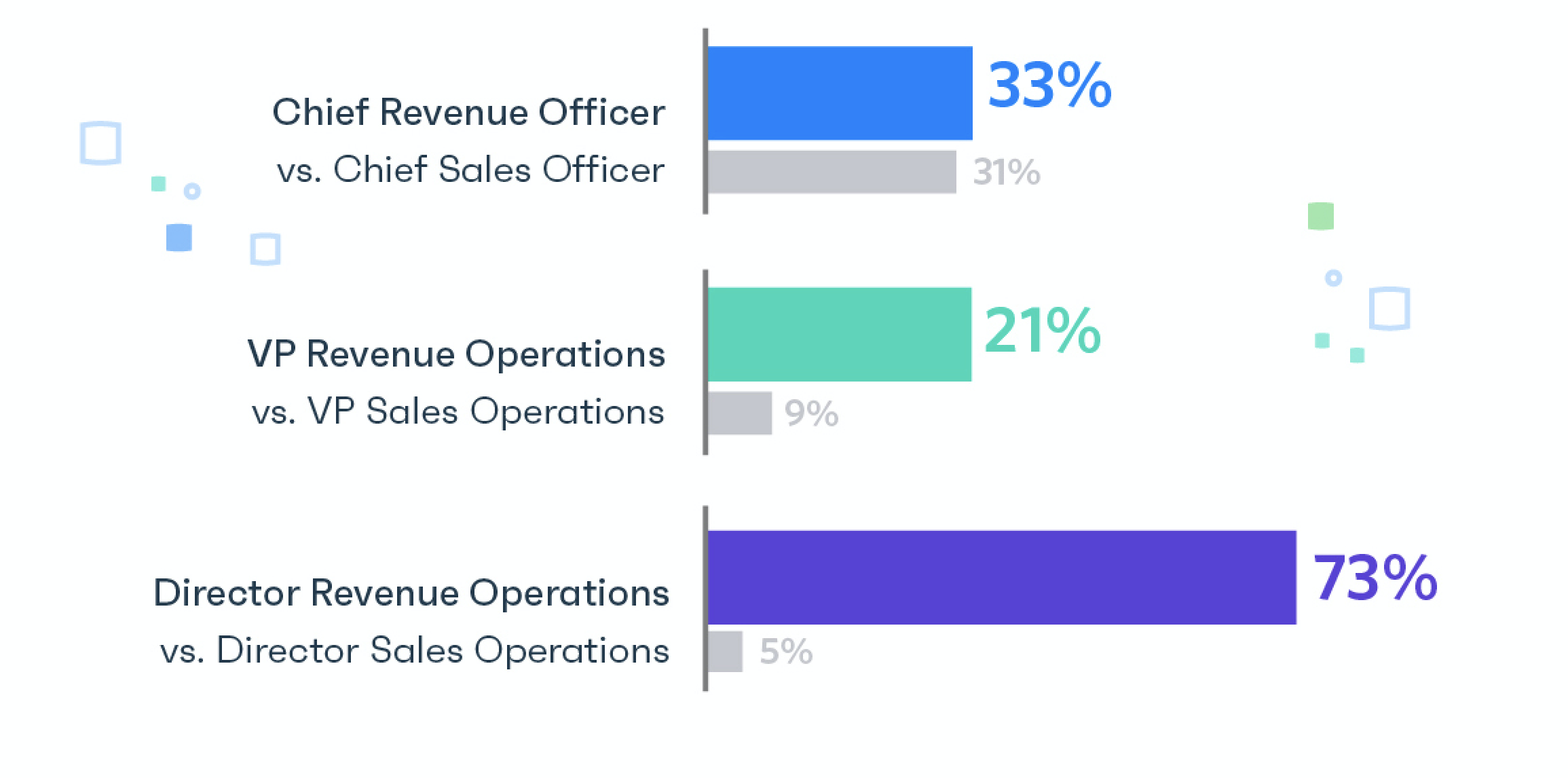
What's Causing the Rise of Revenue Operations?
A profound shift is happening in the way companies are thinking about their revenue process. The need for transparency, accountability, and predictability from the board room to the front line is greater than ever before.
Partially, this is due to the way customers purchase products has changed. They’re conducting their own research well before a salesperson even reaches them. Plus, subscription-based business models mean what happens after the sale is just as important as what happens before.
This means teams responsible for driving revenue—sales, marketing, customer success, and account management—must be aligned throughout the entire funnel if they want to succeed.
Historically, alignment has proved elusive and challenging. But that’s all changing. Here are four reasons we’re seeing a rise in RevOps teams right now (hint: it’s about people, data and processes mentioned above).
- Disconnected, outdated data causing inaccuracies for teams
- Developments in automation and AI driving new insights
- Customers' expectation of a seamless buyer journey
- Increasing need for transparency and accountability
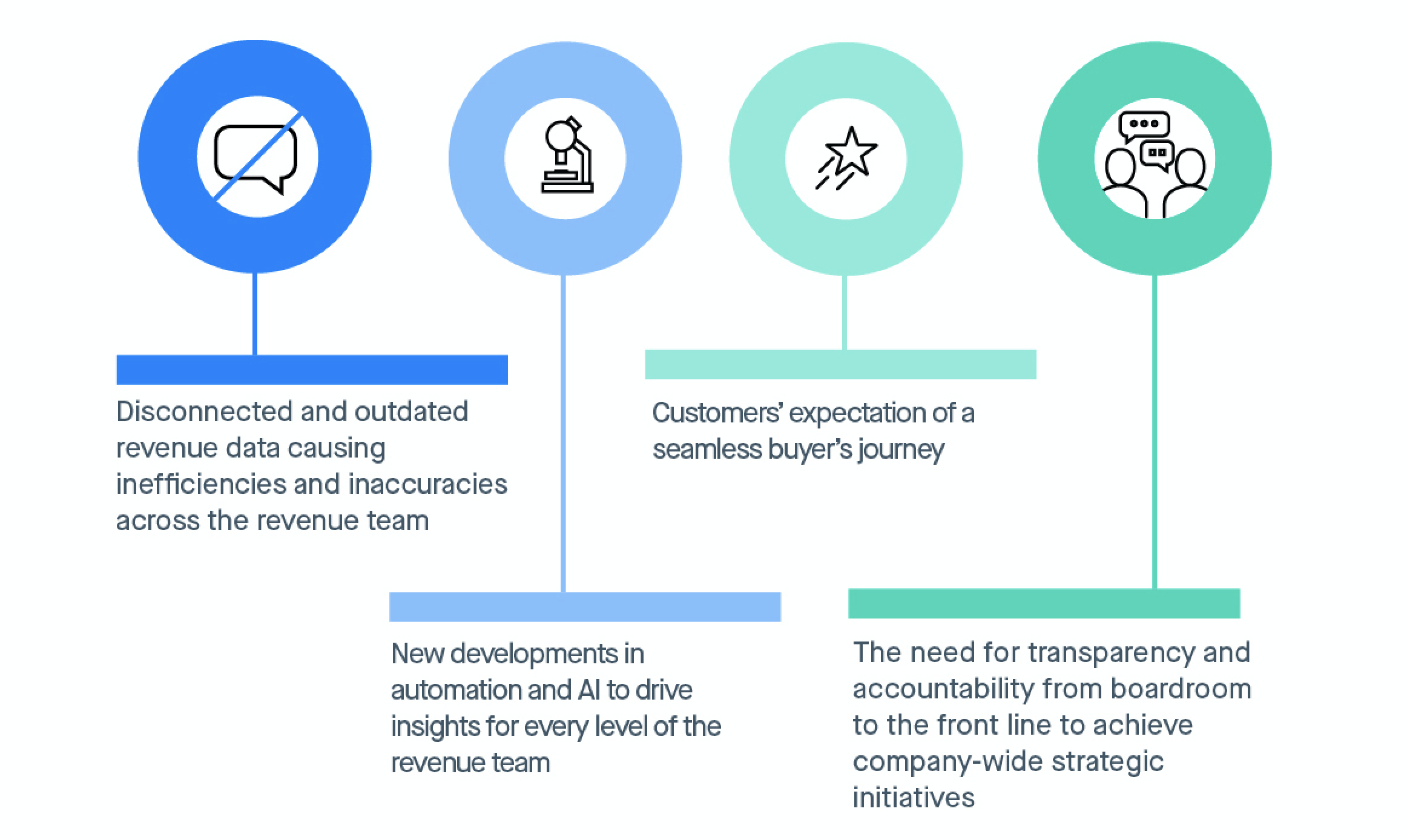
The New Normal for Go-To-Market Teams
In the past, sales teams, marketing teams, and customer success teams have relied on separate tech stacks and systems (CRM, spreadsheets, business intelligence, marketing automation) leading to big disconnects in data. That disconnection results in teams bringing their own reports to the table, wasting time trying to validate and compare data, and ultimately the inability to make informed and accurate decisions.
But it doesn’t have to be that way.
The Revenue Operations movement is here—the next evolution of the traditionally siloed team structure, where teams move away from wasted time, finger pointing, inaccurate forecasts and a lone wolf mentality to data-driven collaboration, transparency and execution rigor, predictable business growth, and faster sales cycles.
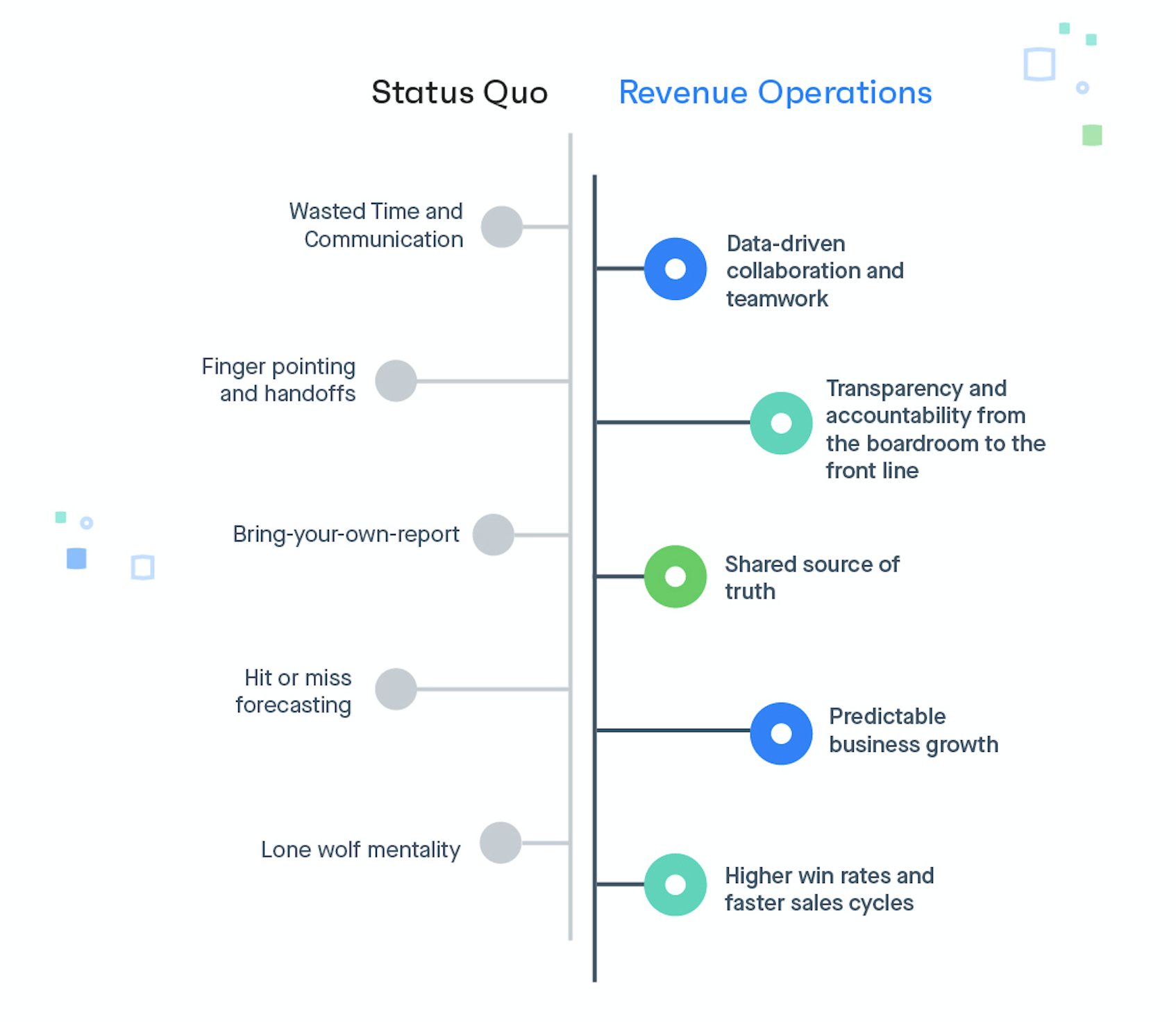
The Benefits of Revenue Operations
In addition to better collaboration and more predictable business growth, companies that align all go-to-market functions outperform those that don’t.
Top B2B tech companies that leaned on revenue ops to accelerate their growth experienced significant benefits, including 10% to 20% increases in sales productivity, according to Boston Consulting Group. Their research also showed that tighter alignment between go-to-market teams resulted in:
- 100% to 200% increases in digital marketing ROI
- 10% increases in lead acceptance
- 15% to 20% increases in internal customer satisfaction
- 30% reductions in GTM expenses
Public companies with revenue ops also saw 71% higher stock performance. Additional Forrester research showed, on average, aligned companies see:
- 10-20% increase in sales productivity
- 15-20% increase in internal customer satisfaction
- 30% reductions in GTM expenses
- 19% faster growth
- 15% more profits
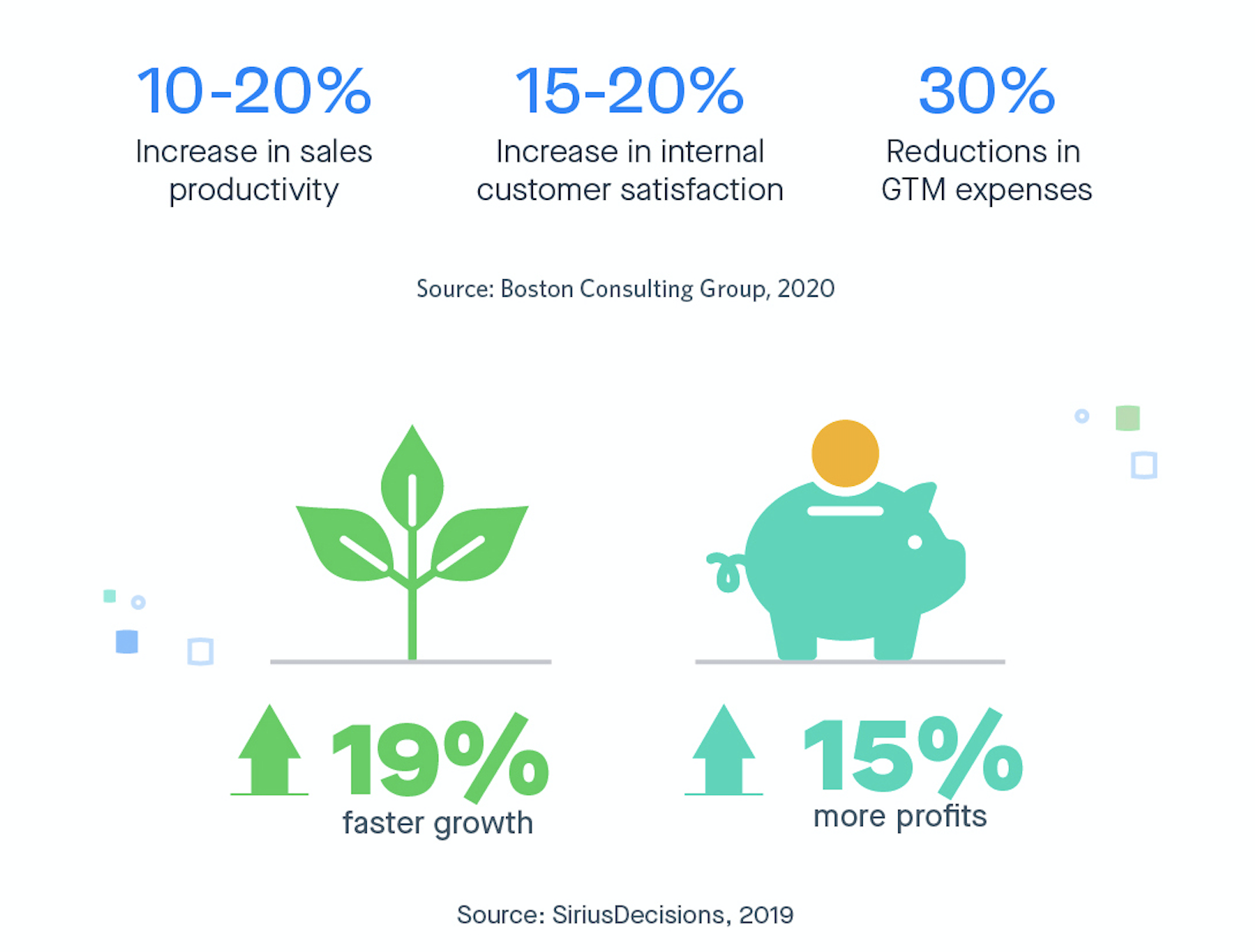
What Are the Key Metrics for Revenue Operations?
The primary goal for Revenue Operations is to drive predictable revenue—that means closed deals for sales, pipeline growth for marketing and net dollar retention for post-sales. Here are just a sampling of key metrics and KPIs Revenue Operations is accountable for:
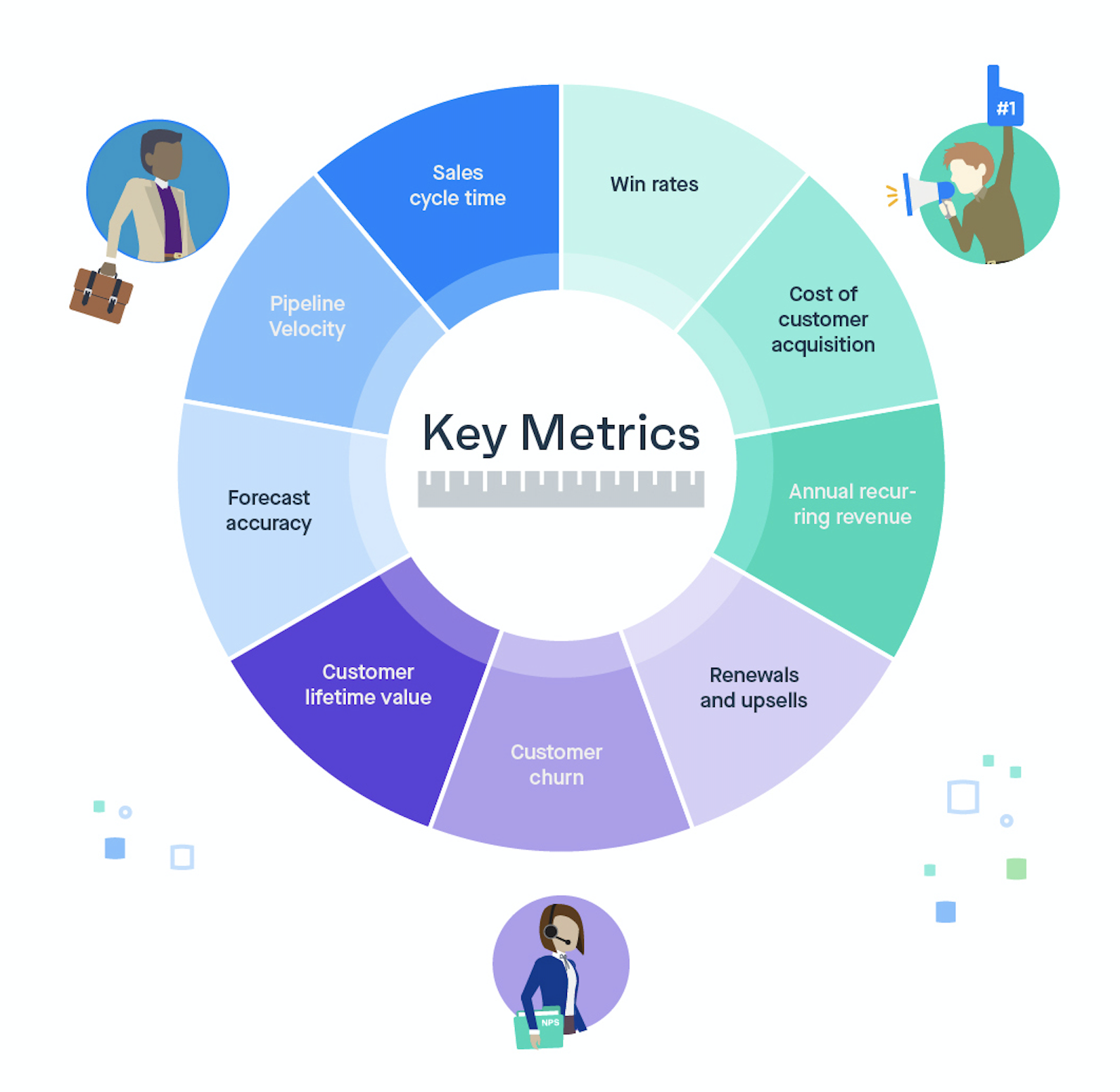
These key metrics include sales cycle time, win rates, cost of customer acquisition, ARR, renewals and upsells, customer churn, customer lifetime value, forecast accuracy, and pipeline velocity.
How Do You Know if You Need RevOps?
The Revenue Operations movement is here—and best-in-class companies are already seeing the benefits of this new way to revenue. However, if you’re still not sure whether your company is ready for that kind of alignment, here are some ways you can tell:
If your goal is to drive transparency and accountability at scale.
We continue to see a profound shift in the way companies think about their revenue process. The need for transparency, accountability, and predictability from the boardroom to the front line is greater than ever before as companies seek to align their entire go-to-market motion to achieve rapid growth and repeatable execution. This can only be done when everyone on the revenue team is aligned and working towards the same success metrics—and that requires the ability to operationalize at scale.
If revenue targets across sales, marketing and customer success aren’t aligned.
When your go-to-market teams aren’t aligned it may seem like you’re on the same page, but you’re really speaking a different language. In disconnected teams, marketing can be meeting one set of goals (number of people at an event, webinar attendees, eBook downloads etc.) but if sales isn’t hitting revenue targets, achieving those goals won’t mean much in the bigger picture. Alternatively, if marketing is delivering what they believe are qualified leads according to plan, but sales are not working those leads, the entire revenue organization is at risk. This is what disconnection looks like.
If key business metrics don’t match up.
Historically, sales, marketing, and customer success would focus on meeting departmental goals, working in their own technology stack, with their own budgets and resources. This lead to siloed, disconnected data and activities that didn’t match up. Revenue Operations teams use a single source of truth to measure and analyze the entire funnel, reduce friction between go-to-market teams, and make decisions to achieve joint goals.
If there is never-ending intraorganizational bickering.
Disconnected data and disjointed priorities lead to finger pointing and mistrust, which result in demoralized teams and internal strife. Aligning your Revenue Operations team isn’t just about making your number, it’s also about creating a thriving work environment that is built on accountability and trust.
If RevOps is for you, here's a step-by-step guide to building and implementing an effective, efficient revenue operations framework.
Revenue Operations Is Here
Revenue operations represents the data, the cadences, the communications, the people in the room where decisions get made, all in lockstep towards a common goal.
When those elements cascade into every nook and cranny of the business, everyone can work together towards what success looks like.
Companies can no longer operate their business like a bucket brigade that passes buyers from marketing to sales to customer success. Today’s best of breed organizations use a common view of the business that allows them to unify and optimize the processes that power the revenue engine and create a customer journey with seamless handoffs.
Clari’s Revenue Operations Platform improves efficiency, predictability, and growth across the entire revenue process. Clari gives revenue teams total visibility into their business, to drive process rigor, spot risk and opportunity in the pipeline, increase forecast accuracy, and drive overall efficiency.
See the full infographic below and learn more about Revenue Operations at Clari.

Still hungry for more? More Revenue Operations content here:




